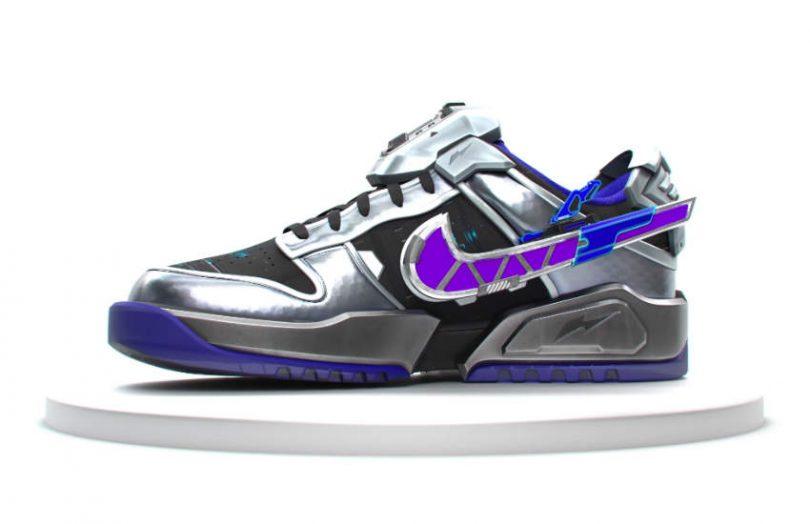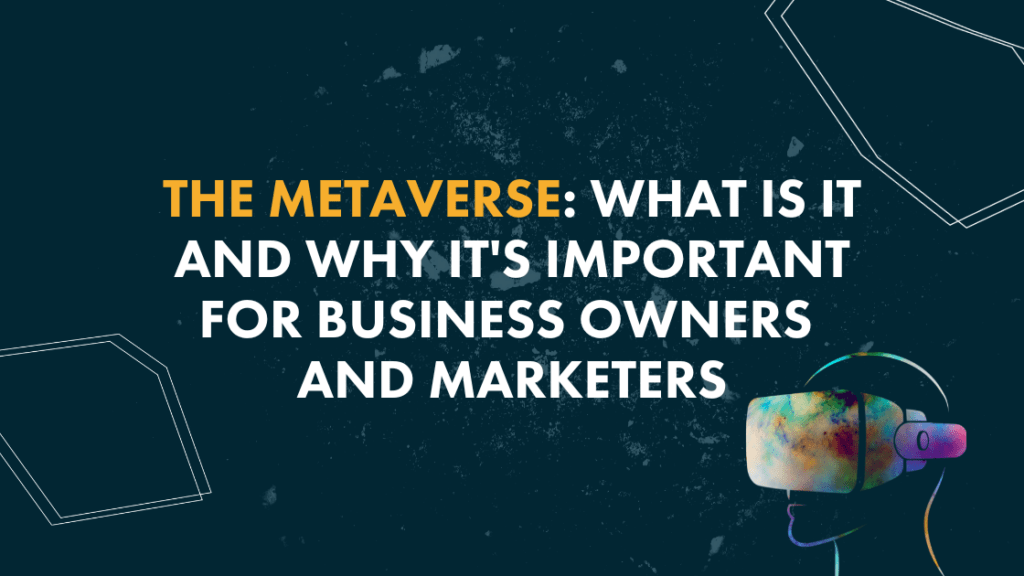The metaverse is starting to take shape, and it’s going to change everything. We’re not talking about some far-off future; the metaverse is already here. Virtual reality (VR) and augmented reality (AR) are becoming more and more popular, and as they continue to evolve, the metaverse will become an increasingly important part of our lives. Business owners and marketers need to start paying attention now to be ready for when it takes off.
What is the metaverse?
It’s a term that was coined by Neal Stephenson in his 1992 science fiction novel Snow Crash. Metaverse is a portmanteau of “meta” and “universe.” It’s basically virtual reality—characterized by persistent virtual worlds that continue to exist even when you’re not playing—and augmented reality that combines aspects of the digital and physical worlds. Consumers can discover information about your brand and make digital purchases of your items/services from the comfort of their own homes.
Some people think the metaverse is just a pipe dream, but we believe it will be an inevitable part of how we seek out entertainment, communicate, do business, etc. According to the consulting firm McKinsey & Co, businesses’ and consumers’ annual global spending related to the metaverse could reach $5 trillion (!) by 2030, with almost half of it spent on e-commerce. And that’s why business owners and marketers should pay attention to broadening their reach further from the physical world to avoid trying to catch up with competitors later.
How is the metaverse factoring in with marketing?
According to a study from McKinsey, the metaverse will cover five different types of daily activities: gaming, socializing, fitness, business, and remote education. “People are telling us that connectivity is likely their primary interest,” said Lareina Yee, a senior partner at McKinsey. According to the research firm Gartner Inc. by 2026, 25% of people will spend at least one hour a day in the metaverse for work, shopping, education, social, and/or entertainment.
The metaverse is already playing an increasingly important role in young consumers’ shopping behavior. A study from Gartner also found that by 2022, as many as 30% of Gen Z shoppers will be using digital avatars to do their shopping. This trend is being driven by the increasing popularity of social media platforms like Snapchat, which allows users to create and share avatars (called “Bitmojis”). A study by Y Pulse states that what young consumers do in the metaverse is directly connected to their interests in the physical world.
How are brands utilizing the metaverse?
Some of the most prominent examples until now of brands using the metaverse come from the highly popular online game platform Roblox. In 2020, Adidas became the first major brand to launch a virtual store on Roblox. McDonald’s followed suit with its own virtual restaurant. And in 2021, Nissan launched an AR car configurator within Roblox that lets users test-drive vehicles virtually.
The clothing brand Forever21 has achieved unbelievable success in a matter of months by selling digital black beanies with the word “Forever” on them on their Forever 21 Shop City on Roblox. They are selling about 2,000 beanies a day at 50 cents each, and are on track to sell 1.5 million of them by the end of this year. And the good part? They cost around $500 to create in total. Forever21 is now working to develop real-world versions of the best-selling beanie and, eventually, an entire collection inspired by its virtual Roblox realm.
Currently, Forever21 sells four types of digital items: digital twins, modified twins, completely new clothes (such as the Forever beanie), and completely new products (like a boombox). The company doesn’t sell physical prom clothing, yet after a recent prom campaign, they doubled their sales of them on Roblox. Forever21 is also urging the Roblox community to vote on the design details of their digital products, which the brand can use to take into account in creating their physical assortment.
How can brands get involved in the metaverse?
Buy Virtual Real Estate
Just like in the physical world, there is a limited amount of space in the metaverse. And as more brands enter this space, the demand for virtual real estate will only increase. For example, the virtual gaming universe Axie Infinity sold nine plots of land for a shocking $2.3 million (550 ETH)!
Develop Your Own Non-Fungible Token (NFT)
NFTs are digital assets that are unique and not interchangeable. They are stored on a blockchain, which is a decentralized database that allows for transparency and security. Some examples of NFTs include virtual land, art, and even tweets! As a brand, creating your own branded NFT is an easy way to get your foot in the door. For example, Nike created their digital sneakers called “Cryptokicks” that originally sold for $130,000!

Sell Avatars or Digital Products
If you create and sell items in the real world, there’s probably a way to do it in virtual spaces. A digital product is a virtual representation of a product. While digital products and avatars may not be “real” so that you can touch and feel them, they are real enough for customers to spend money on.
It’s easy to imagine why someone would buy a virtual upgrade (like a special weapon or a custom Ferrari) that helps them get the upper hand in a video game, but it might be harder to imagine how brands focused on physical products can get their foot in the door. For example, Taco Bell is jumping on the trend and selling NFT-s for thousands of dollars. How about adding some Ever-Crunching Tacos to your collection?

Are consumers ready for the metaverse?
Not all business sectors are ready to jump into the fun and profits of the metaverse yet. The technology isn’t quite there, and we need to see a few more key developments before the metaverse can really take off. But that doesn’t mean we shouldn’t start planning for it now. Another big roadblock is the mindset of CEOs and marketers in charge. Since the technology feels too futuristic or only enjoyed by “young people”, investing in the virtual world doesn’t feel like a business decision that will pay off here and now.
Meta’s metaverse
Since Mark Zuckerberg revealed the ambitions Meta has for their metaverse worlds, they have received a lot of backlash from consumers. In addition to everyone agreeing that Mark Zuckerberg appears to be already living in the metaverse judging by the robotic qualities of his presentation, people express concern that the more our lives shift to the digital, the less we will actually enjoy living in the physical world. Many consumers express concern that the metaverse is shaping young minds to make them even more addicted to their digital devices through the metaverse.
One Youtube comment under the metaverse reveal video stated: “This video makes me want to get rid of my devices and get out in the real world.” Ouch!
Iceland fights back with Icelandverse
While the idea of experiencing things that could not be attainable in the physical world is tempting, people are still not overly excited about wearing uncomfortable VR headgear. The country of Iceland saw an opportunity to chime in on the discussion and created Icelandverse which is “unlike any other open-world experience with “-verse” in name, because it’s real. Plus, you don’t need a funny-looking VR headset”.
With a subtle play on the character of Mark Zuckerberg and impeccable Icelandic humor, the video was an immediate success on the internet, with commenters agreeing that nothing beats the “real-verse” and beauty of Iceland.
So what can we make of this metaverse business?
The metaverse is broadening its reach from games to all fields of business, whether we like it or not, and it’s important for business owners and marketing professionals to keep an eye on how it develops. While the technology isn’t quite there yet and the general public may not be ready to fully embrace it, those who are able to jump on board early will have a significant advantage over their competitors.
What do you think? Get in touch with us, and share your thoughts!




